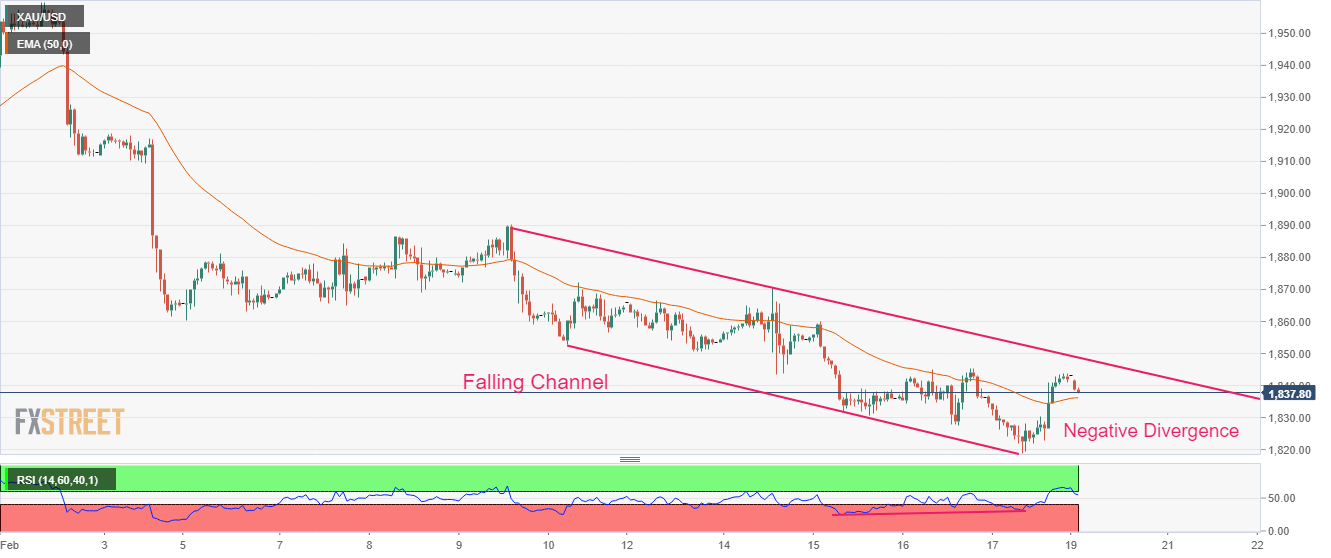- Gold Price Forecast: XAU/USD skids below $1,840 as geopolitical tensions dampen market mood
Market news
Gold Price Forecast: XAU/USD skids below $1,840 as geopolitical tensions dampen market mood
- Gold price has slipped below $1,840.00 amid the risk-off market mood.
- Escalating US-China tensions and the launch of projectiles from North Korea near Japan’s EEZ have supported the USD Index.
- Fed Bowman believes that the central bank has a long way to scale down inflation to 2%.
Gold price (XAU/USD) has slipped to near $1,837.90 after delivering a downside break of the consolidation formed in a narrow range of around $1,844.00 in the Asian session. The precious metal has been offered amid escalating geopolitical tensions between the United States and China and the launch of projectiles from North Korea near Japan’s Exclusive Economic Zone (EEZ).
Investors should brace for sheer volatility as the equity markets in the United States will remain closed on Monday due to Presidents’ Day. Meanwhile, S&P500 futures have slipped further amid rising expectations of the continuation of the restrictive policy stance by the Federal Reserve (Fed), portraying a decline in the risk-aversion theme.
The US Dollar Index (DXY) has scaled above 103.70 as investors are getting nervous that the higher-than-anticipated US Consumer Price Index (CPI), Producers Price Index (PPI), and monthly Retail Sales data have triggered the risk of a revival in the inflationary pressures.
Fed Governor Michelle Bowman said on Friday that they are seeing a lot of inconsistent data in economic conditions. He further added, the Fed has “A long way to go to get inflation back down to our goal."
Gold technical analysis
Gold price has rebounded after sensing a loss in the downside momentum on an hourly scale. The precious metal was continuously making lower lows while the Relative Strength Index (RSI) (14) made a higher low. The negative bullish divergence bolstered the case of a bullish reversal.
The Gold price has comfortably shifted its business above the 50-period Exponential Moving Average (EMA) at $1,836.42, which indicates that the short-term trend is bullish now.
Broadly, the Gold price is oscillating in a Falling Channel chart pattern. For a fresh upside, the Gold price needs to deliver a breakout of the chart pattern ahead.
Gold hourly chart
